Cosmoloxias
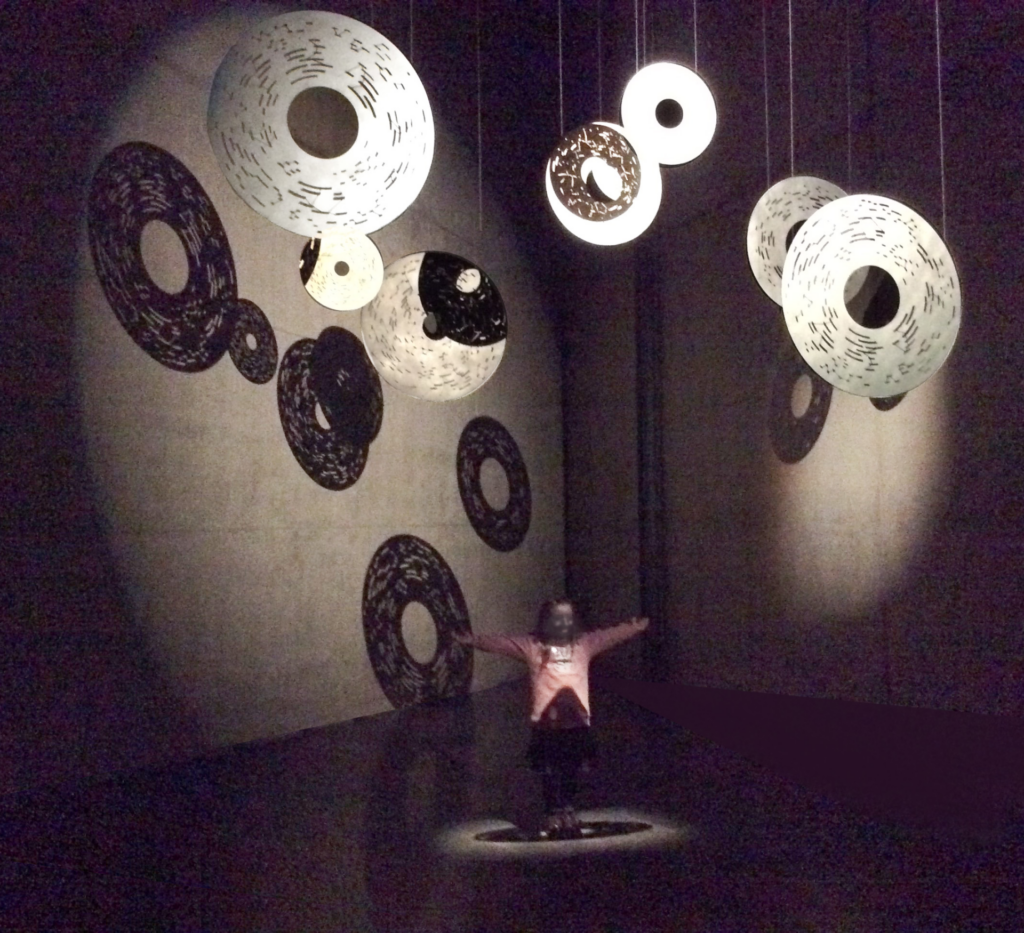
Cosmoloxias is part of a dialogue-laboratory that takes place between Irene Dubrovsky and Jose Edelstein and the ArtLAb ( USC Santiago de Compostela Unniversity) convinced of the power of investigating the border between art and science.
Cosmoloxías brings together a collection of works that review the modes of representation of the Universe. In them Irene Dubrovsky reconstructs an instant of contemplation of the cosmos, a starry night seen from the earth and the first instants of the primordial light of the Cosmos. The Celestial Atlas is at once score, encryption and mapping.

Dubrovsky presents video installations, objects and paintings created from image banks extracted from ESA space agency programs, reappropriated and intertwined as image-text, a recurring theme in his artistic research.

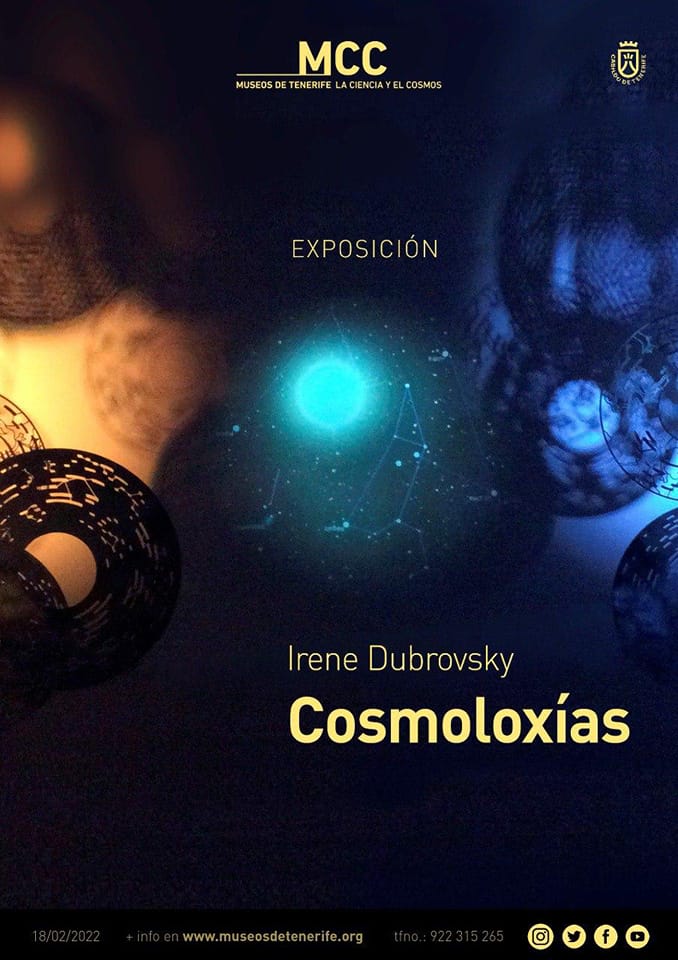
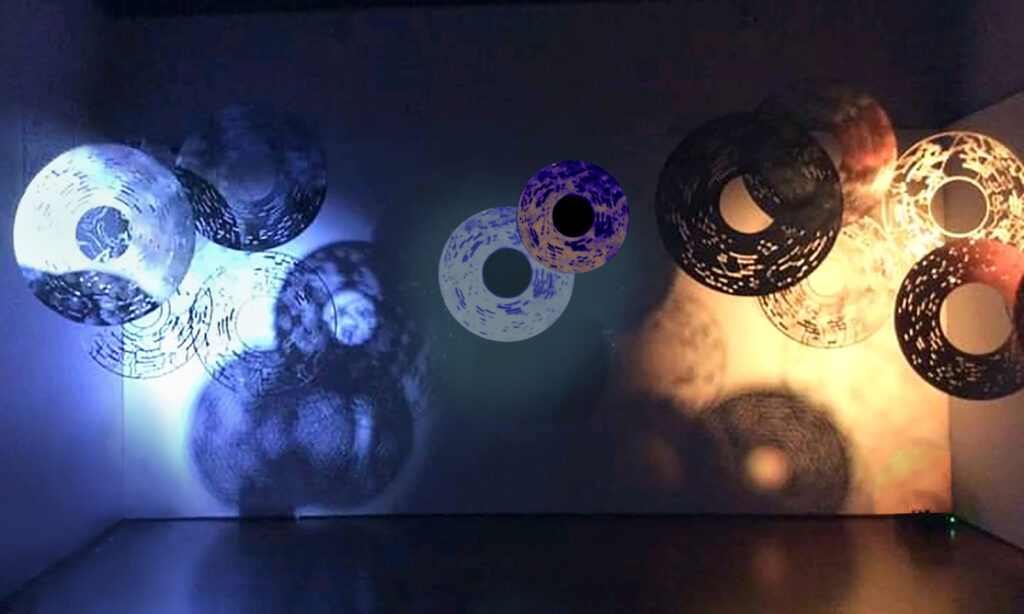
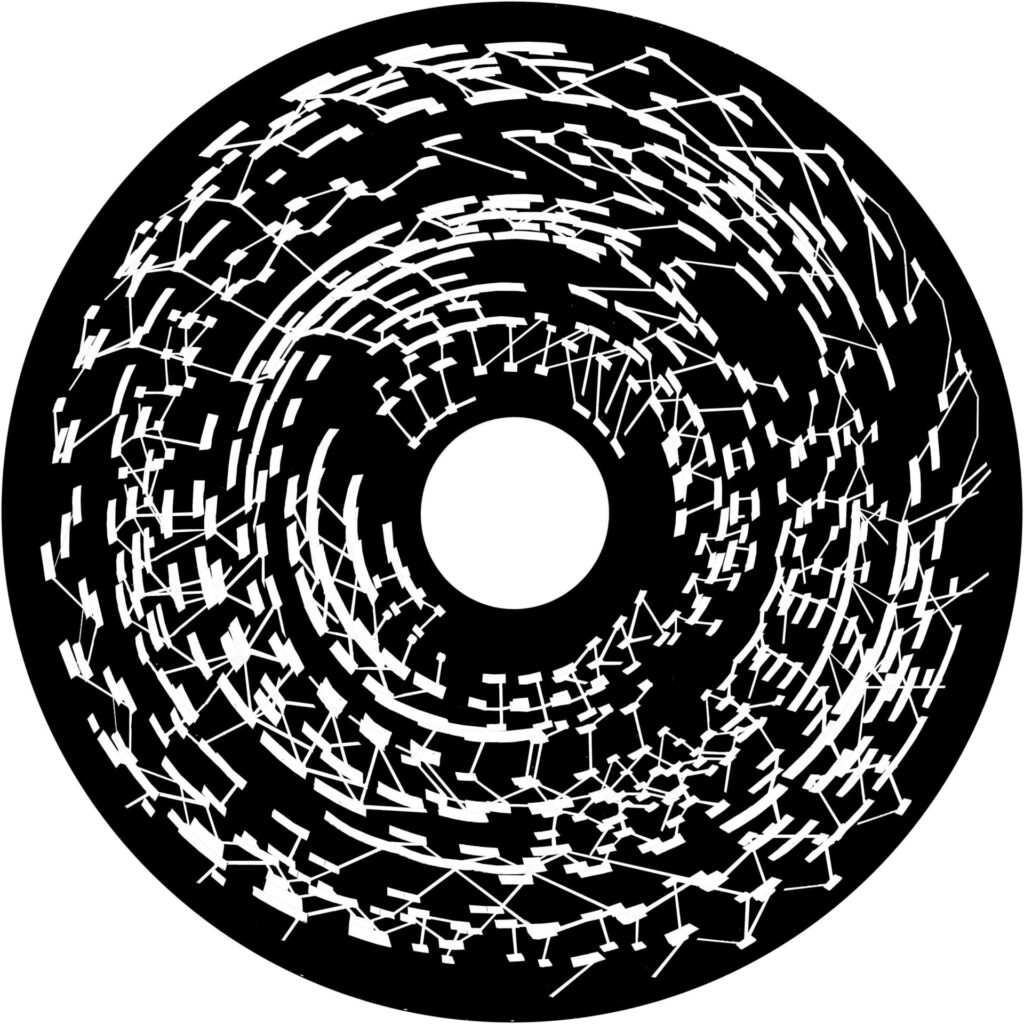
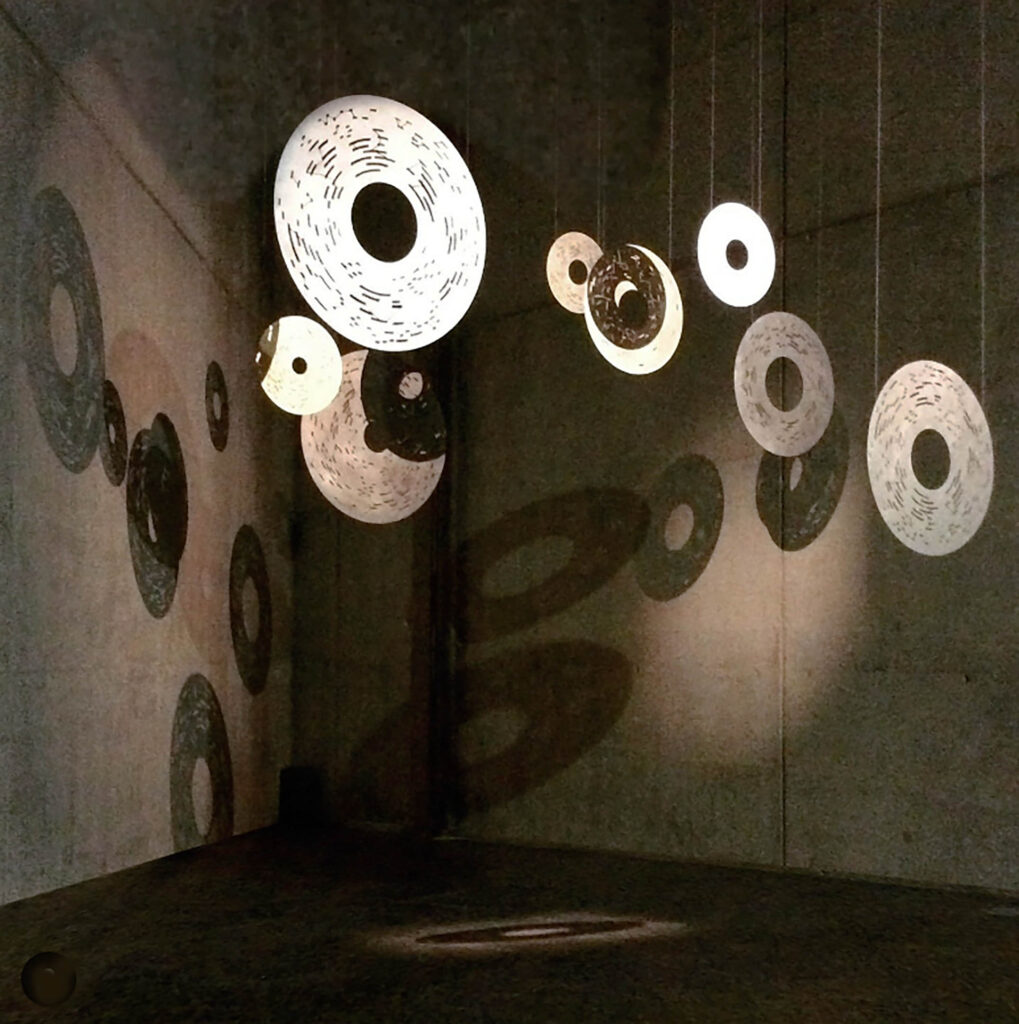
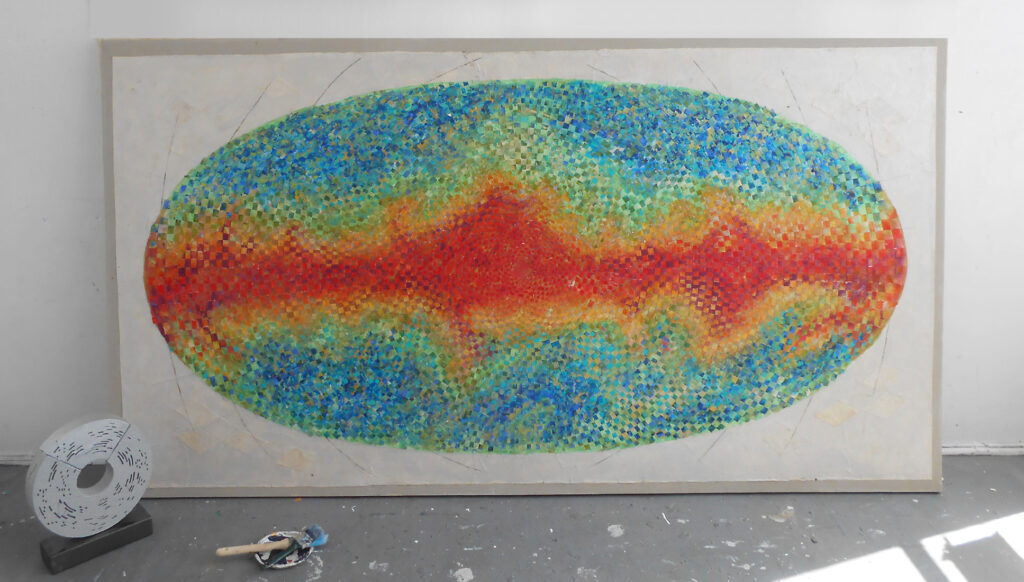
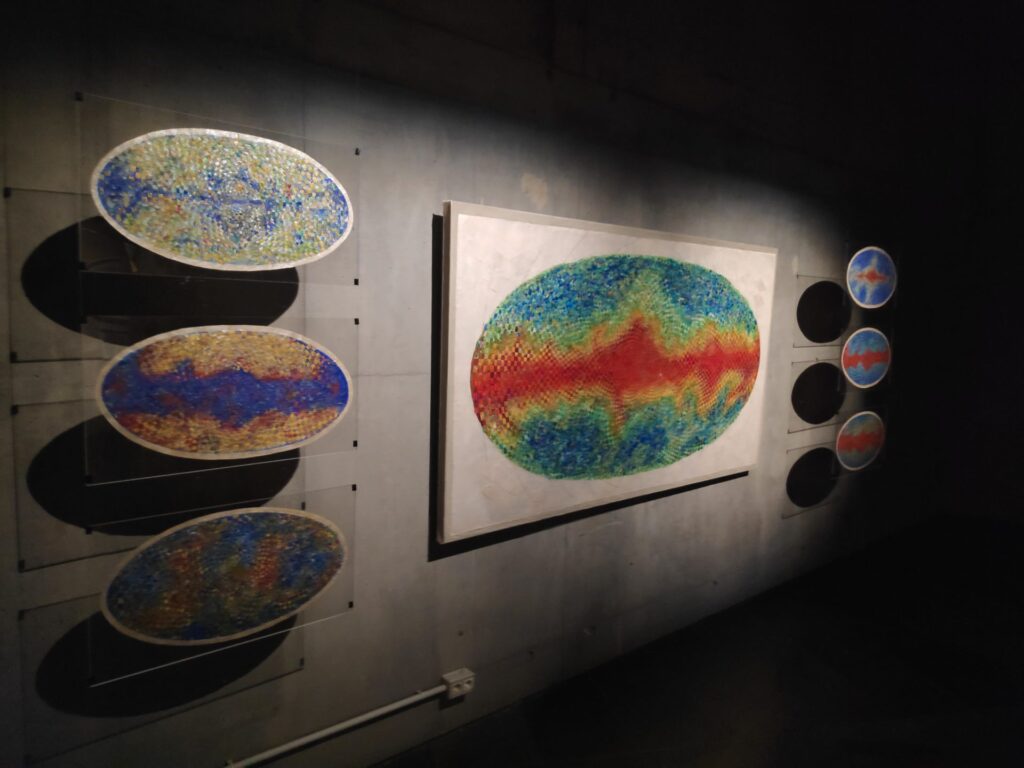
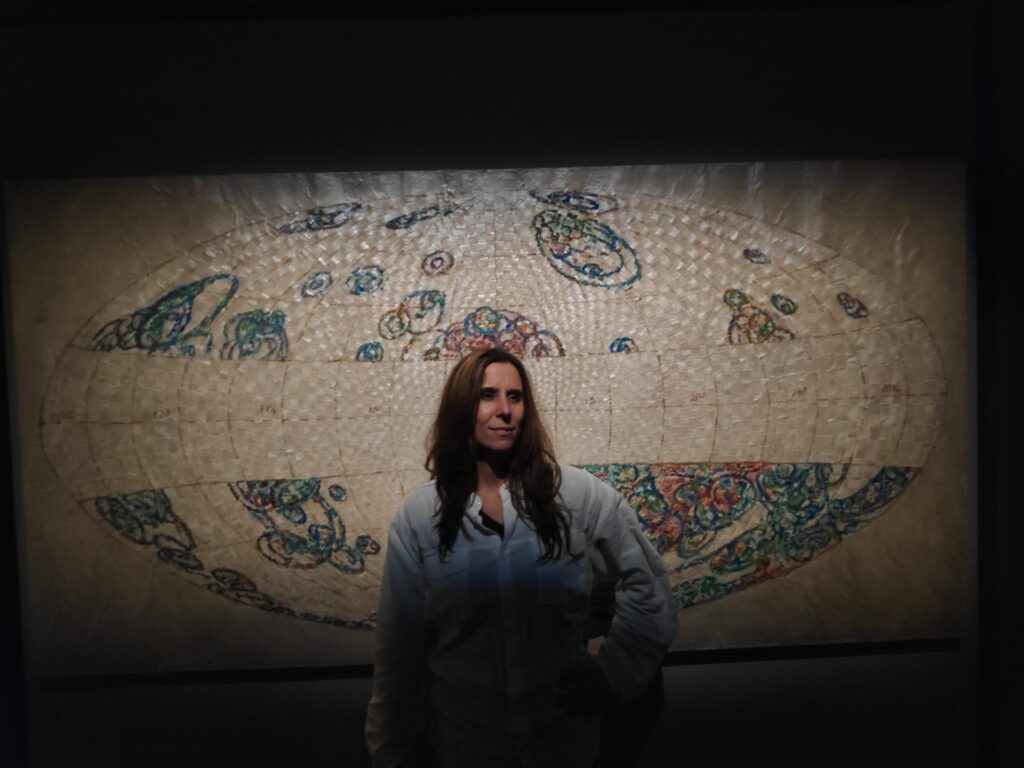
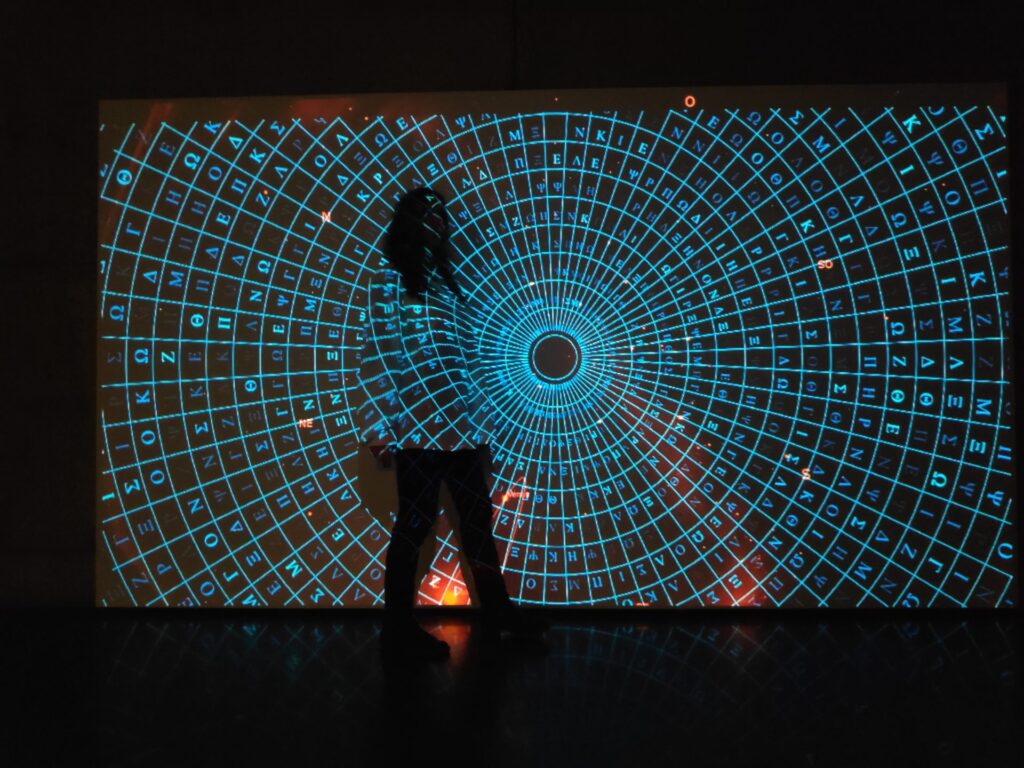
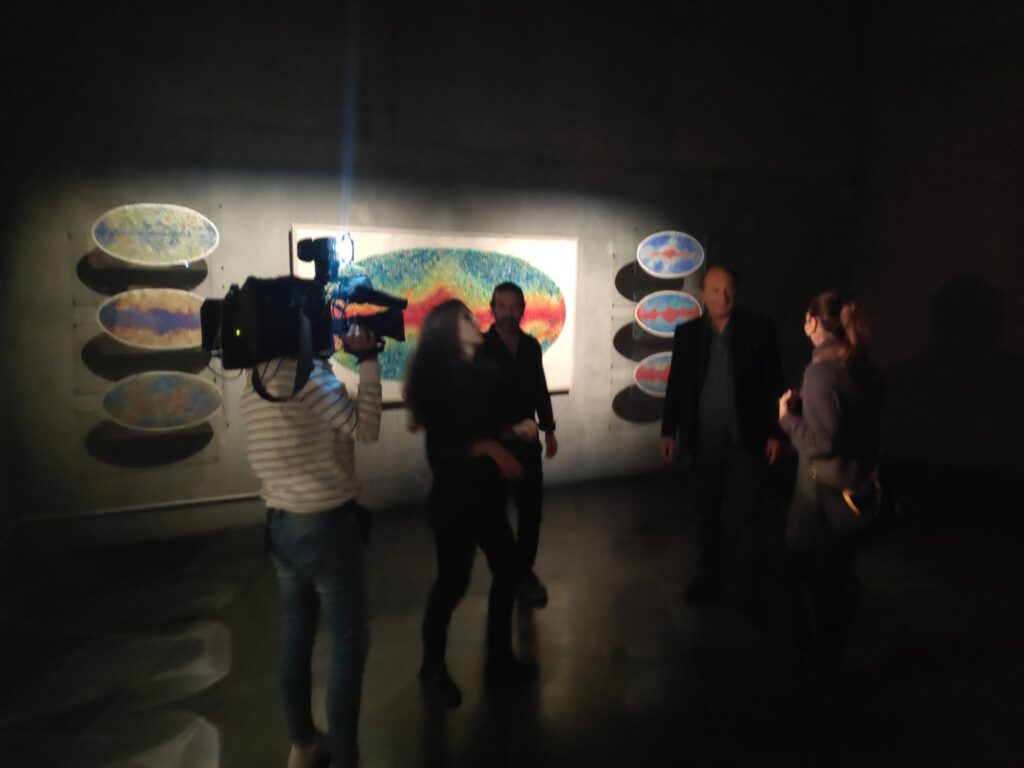
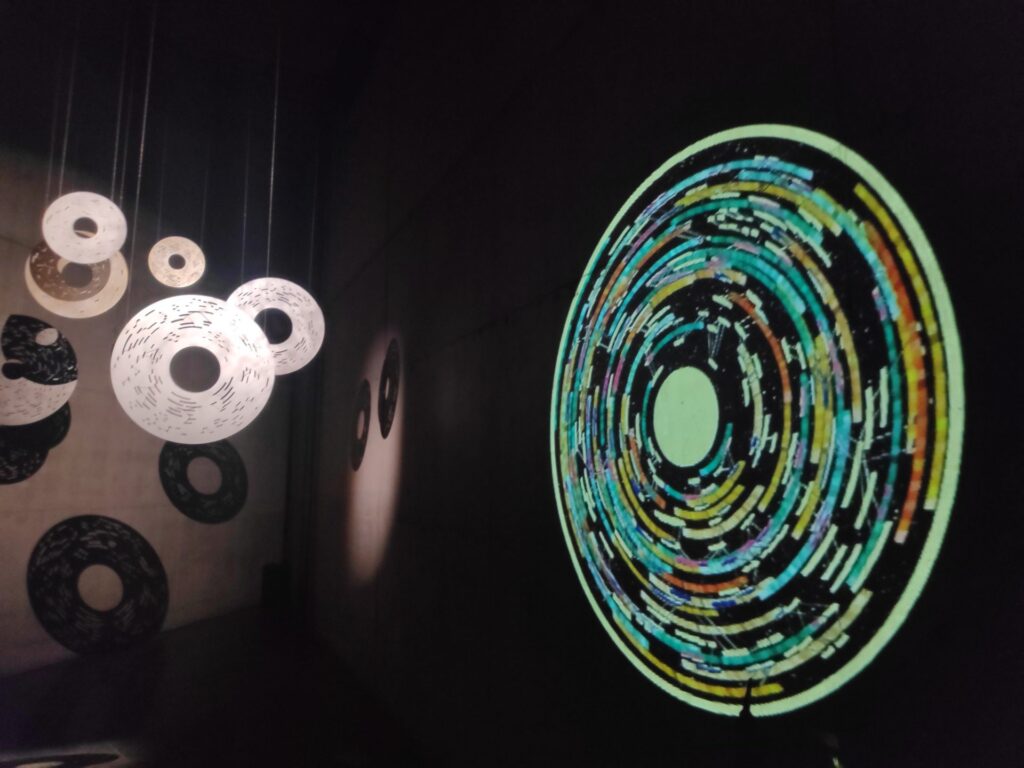

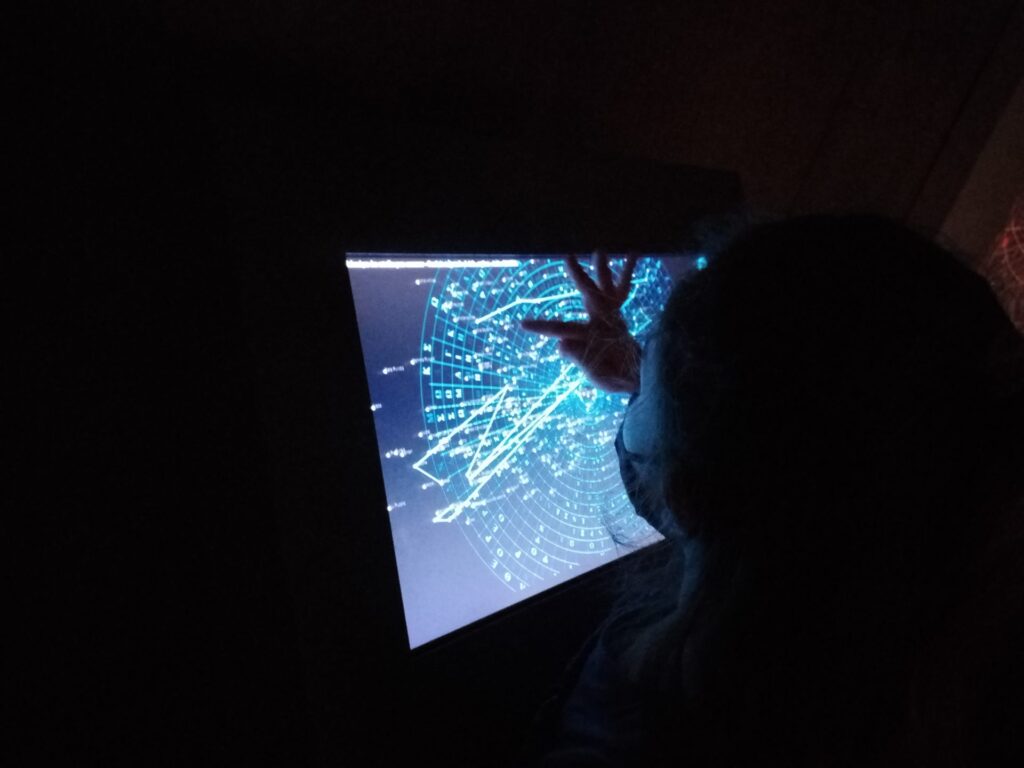

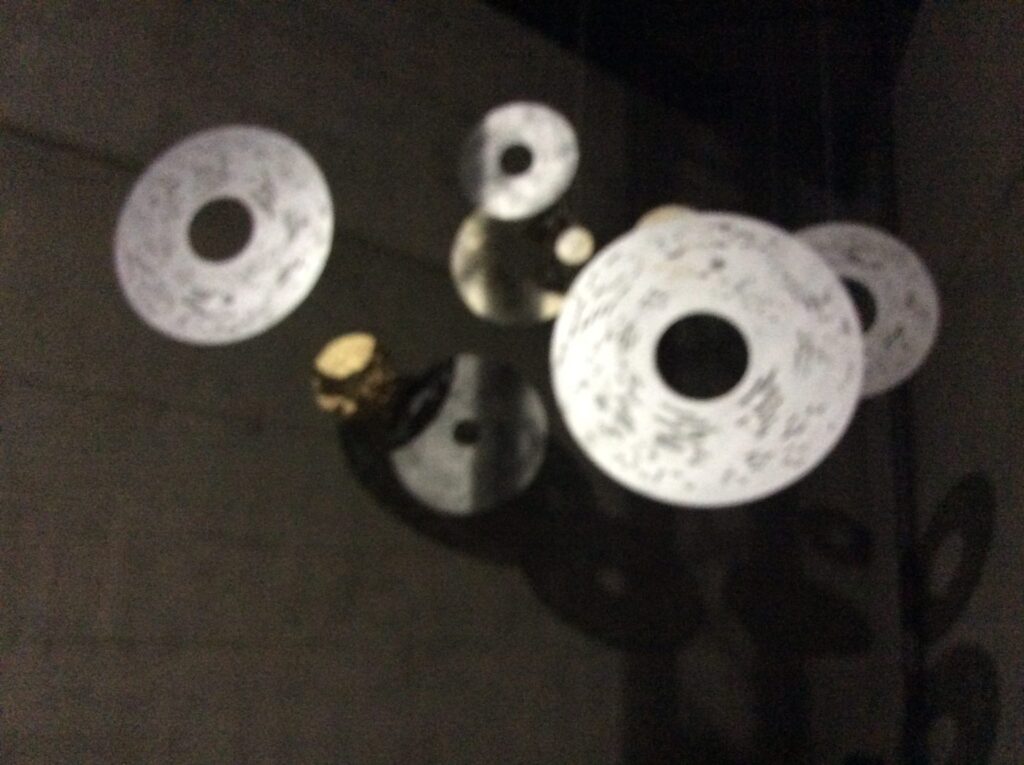
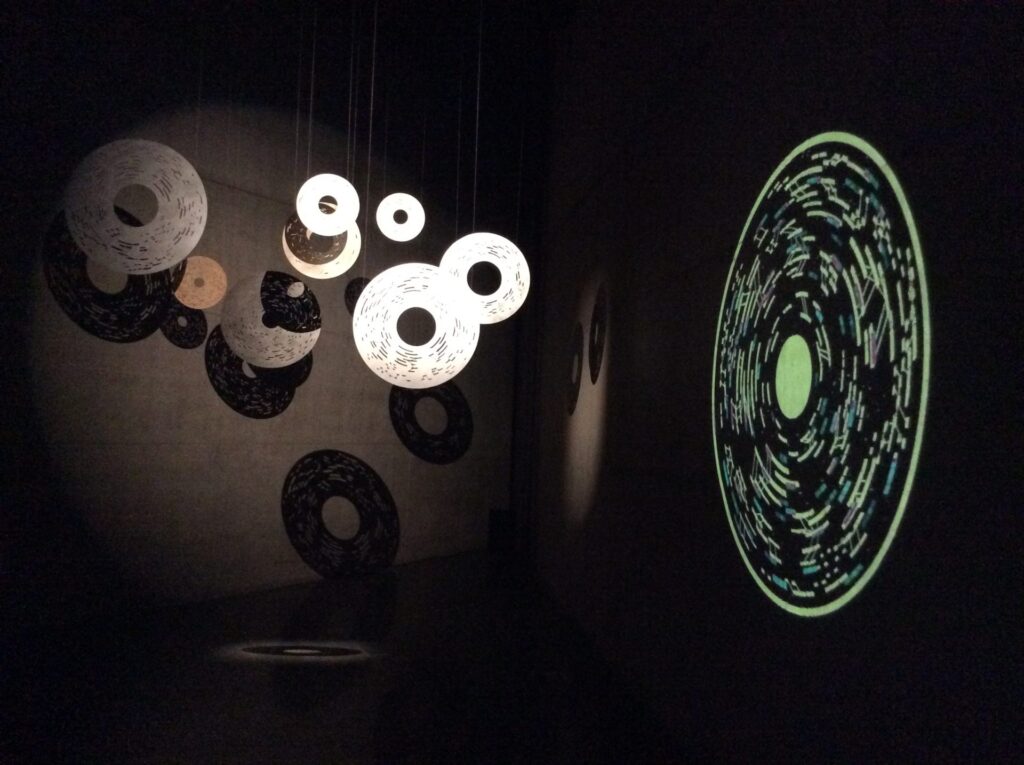
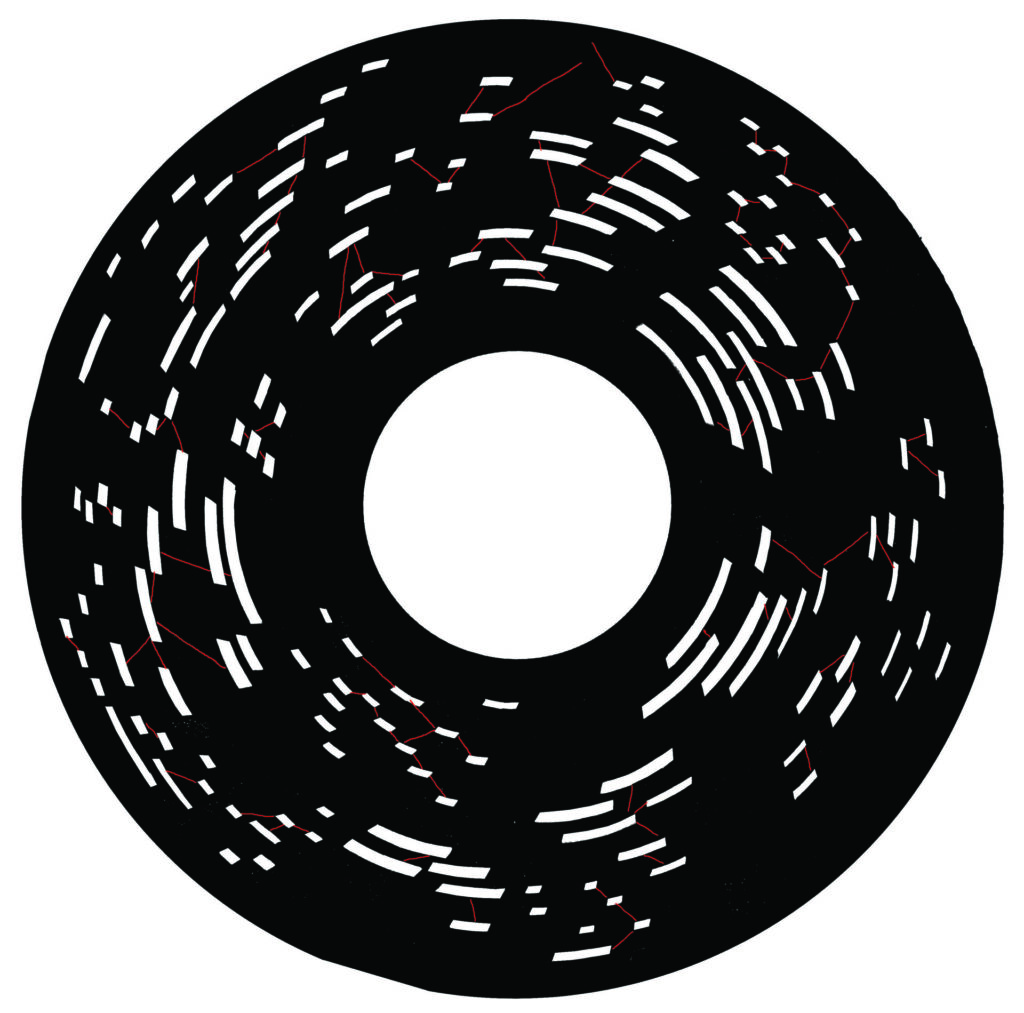
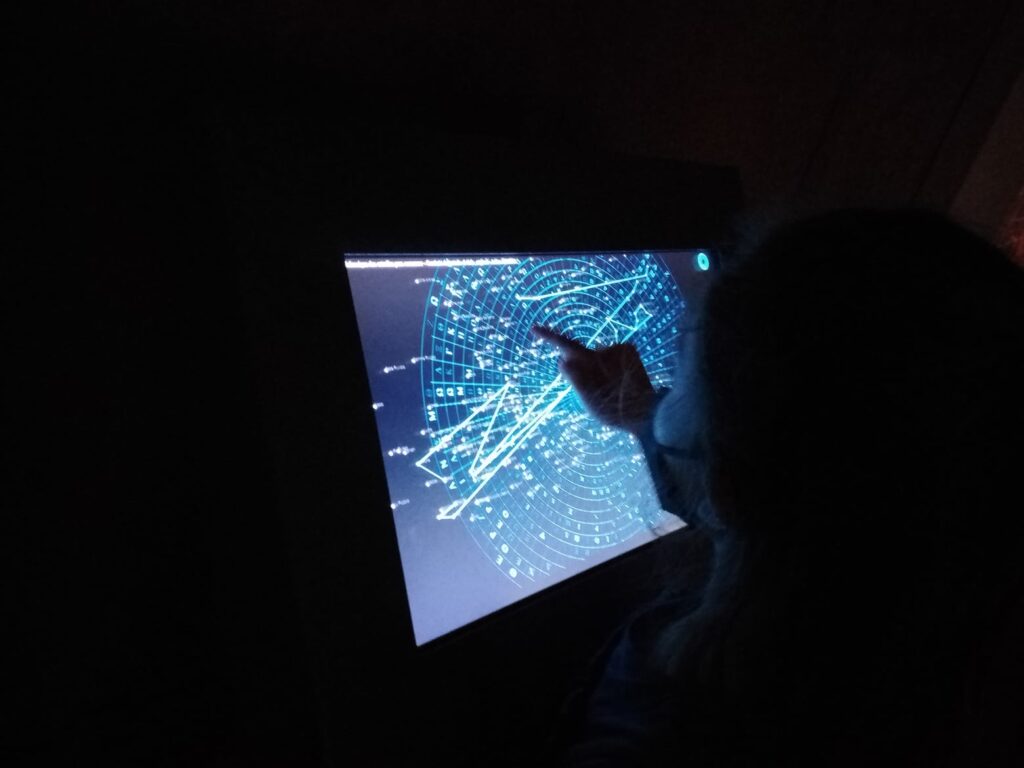
COSMOLOXÍAS. Barbara Perea.
The pieces shown in this exhibition are the result of a lifetime of obsession with celestial cartographies and cosmological phenomena as seen, interpreted and reworked through the lens of an artist. They weave together the languages of empiricism, science, technology, music and art: from the primordial origins of human culture – textiles – to the digital and image-visualization technologies of our times.
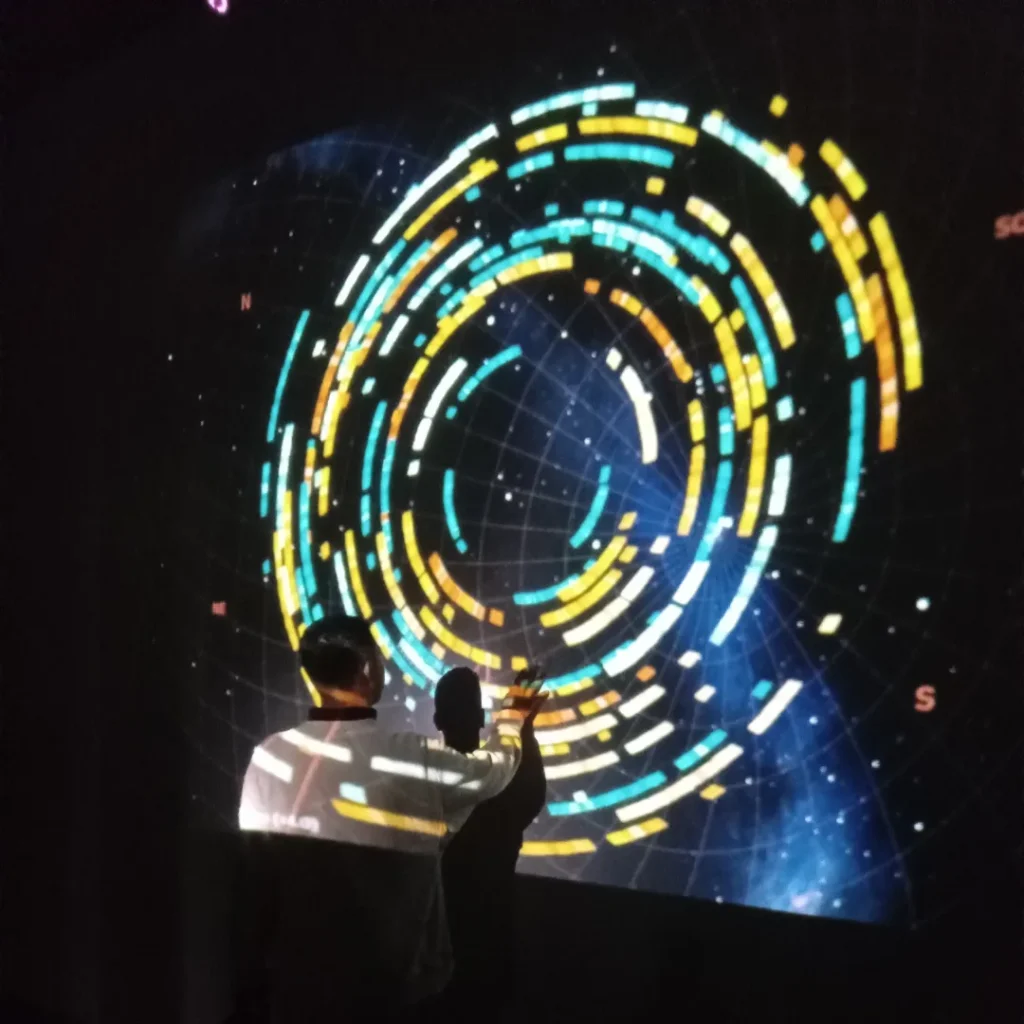
The celestial constructions reveal, among other elements, our Milky Way galaxy, the cosmic microwave background and the fabric of the universe. The asemic language imbricated in the fabric escapes direct translation and interpretation. We enter, almost, in the territory of the cipher. In the circles of signs traced by Dubrovsky in the Rosetta series, where the Greek and Latin alphabets are mixed, the infinite combinatory possibilities of those spellings can be seen. These schemes, inspired by Giordano Bruno’s Ars Memoriae, reinforce the idea that permeates the exhibition about the repositories of memory and the registers of information. In the Disks of the Stars, Irene Dubrovsky interprets her observations of the sky by inscribing the position of the stars on metallic disks to create scores that synthesize the expanded temporality of the stars into a dimension more comprehensible to the finite human experience, while echoing the gears of the great celestial machinery.
The exhibition thus subtly traces a history of human technique and technology and highlights the historical supports and systems of information storage: the codex, the punched card, the algorithm, reworked here to narrate another possible history(s) of the Cosmos.
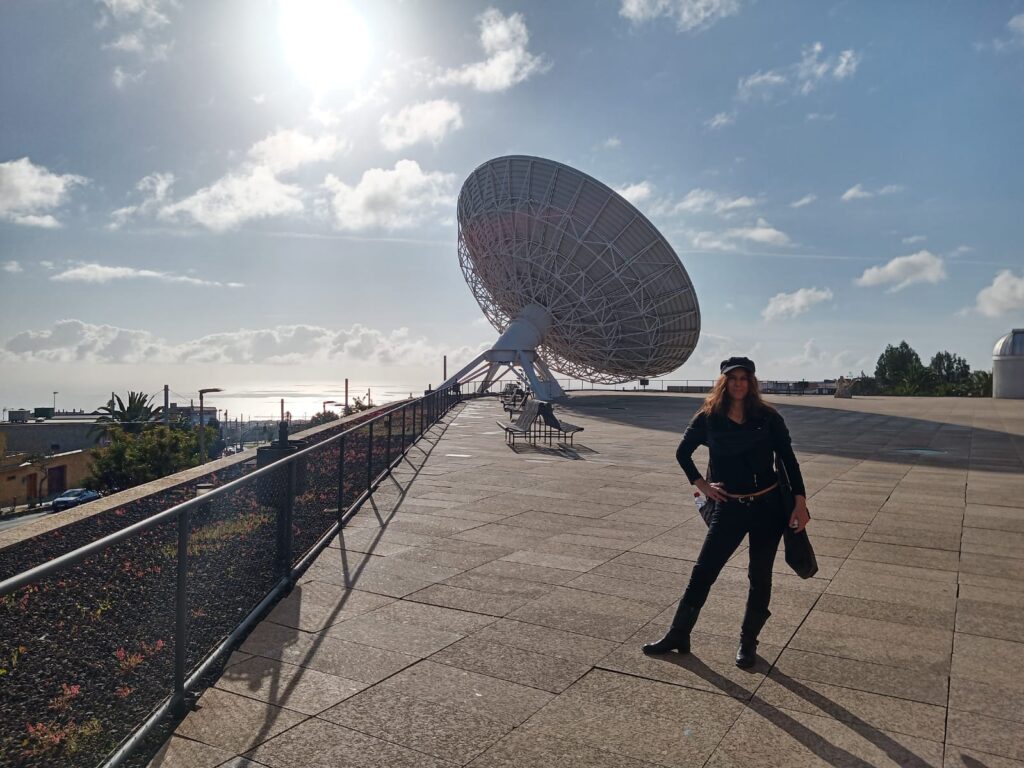
Semiotics of the Sky
In the distance of the cosmos we can read its past. The dark abysses that envelop the stars tell us that the universe had an initial instant. Nostalgia leads us to stretch our gaze with telescopes and other equipment, hoping to find in that text some clue that allows us to understand where we come from, how we are here. But reading demands more than mere observation. We must be able to discern, decipher and translate. Irene Dubrovsky’s work is a profound and moving inquiry into the semiotics of the night sky. In it coexist different ways of looking that remind us that meaning is a tacit agreement between what we see and what we are. Tell me what you see in the dark cloak of the night and I will tell you who you are.
In the distance of the cosmos we can read its past. The dark abysses that envelop the stars tell us that the universe had an initial instant. Nostalgia leads us to stretch our gaze with telescopes and other equipment, hoping to find in that text some clue that allows us to understand where we come from, how we are here. But reading demands more than mere observation. We must be able to discern, decipher and translate. Irene Dubrovsky’s work is a profound and moving inquiry into the semiotics of the night sky. In it coexist different ways of looking that remind us that meaning is a tacit agreement between what we see and what we are. Tell me what you see in the dark cloak of the night and I will tell you who you are.
Jose Edelstein. Theoretical physicist and writer.